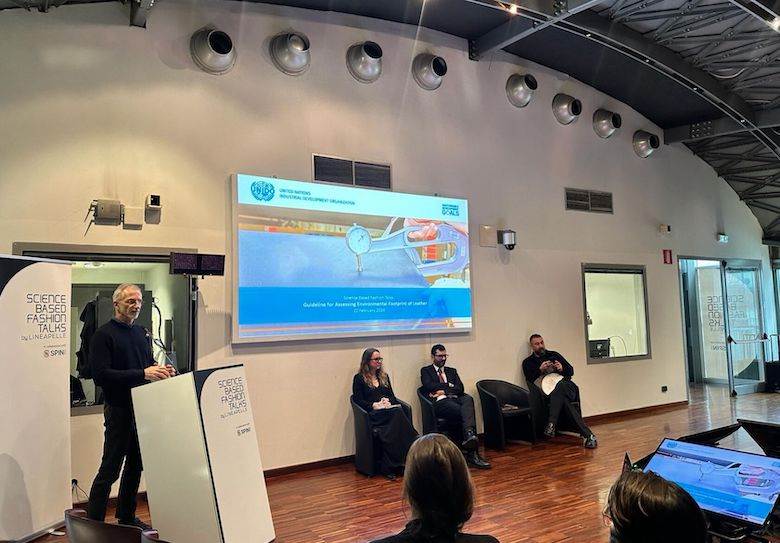UNIDO is preparing new guidelines for assessing leather’s carbon footprint

The United Nations Industrial Development Organisation (UNIDO) is working on a new guide for assessing the environmental footprint of leather.
UNIDO’s project manager for leather, Ivan Král, unveiled the idea at Lineapelle in Milan on February 22, in his contribution to the series of science-based talks that formed part of the exhibition. “We want to create principles for carrying out these assessments,” he said, “and we want them to be guidelines that all companies use in their calculations.”
His argument is that there have already been too many false comparisons because studies such as lifecycle assessments have not covered the same aspects of production in the same way.
UNIDO aims to make use of, but review, earlier work on standards, on product environmental footprint category rules (PEFCR) and other available content. Allocation rules, indicating leather’s share of the upstream carbon footprint of the raw material, will also be part of this.
The report, which UNIDO will share at the next Lineapelle in September and aim to publish soon afterwards, will be science-based and will go for publication and peer review. It will seek to work with other United Nations bodies, including the Food and Agriculture Organisation and the United Nations Environment Programme, as well as with academics and scientists.
Mr Král said he does not want a figure purportedly representing carbon dioxide-equivalent per square-metre to be all that companies and consumers take away from this new initiative. He would like other dimensions, including the effect of durability on the carbon footprint of a long-lasting product.
Other dimensions UNIDO wants to bring in include separate considerations for the methane and the CO2 carbon cycles, and the impact on the environment of not using the millions of available hides that go to waste every year.
“We should use this natural material,” Mr Král. “This will be much easier than having to manage the production of items that use synthetic fibres.”











